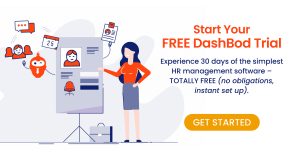You work, you get paid, that’s how it goes.
But that’s just what everyone sees on the outside. For you, that’s known as payroll and it’s made up of many moving parts. Just one minor detail overlooked could wreak havoc.
That said, mistakes – they happen to the best of us. But it’s probably best not to mess them up doing payroll, or you could be slapped with a hefty fine. Unfortunately, there’s quite a bit that could go wrong.
Government forms, taxes, internal documents, payroll can be challenging. HR teams are always on the lookout for better systems to reduce these errors.
So we decided to help. Here are the most common payroll mistakes businesses make in Singapore. Get yourself checked!
Payroll mistake #1 – Forgetting to keep records
There are many government regulations that dictate how long records need to be kept for.
When it comes to HR records, which include job applications, performance reviews, personnel files and job testing data, two years is the minimum time frame for record retention. And records of ex-employees must be kept for one year after they leave employment.
Employment forms, such as Form IR8A and Appendix 8A, Appendix 8B or Form IR8S have to be collected and submitted to the relevant authorities before 1st of March each year. Don’t forget the medical records, insurance, leave applications, salary and CPF submission too.
While printed documents and physically signed papers might still work for a small team of 10, you can’t be doing that with a company any bigger than that.
Companies that don’t emphasize proper payroll management end up paying a costly price.
It would be a logistical and legal nightmare to have misplaced, inaccurate or missing records!
You might be interested in: IRAS Record Keeping Guide for GST-Registered Businesses
How to fix it
Automating this process through time tracking, electronic submissions, and cloud-based document storage removes the physical roadblocks and helps reduce human error.
Instead of getting trapped in a cold room between metal cabinets, desperately searching for a former employee’s file among the 1,263 files on the local server… payroll professionals can rely on a system – their HRM software to retrieve the document they need. Right when they need it.
Payroll mistake #2 – Falling behind on tax payments and filing
Of course, taxes…
Who likes paying taxes? Worse, who likes having to calculate, account for and submit them?
Tax codes can change for a wide variety of reasons, including (but not limited to) salary, benefits, bonuses, past employment and seniority. Get them wrong and you’ll have some costly recalculations to carry out, not to mention embarrassing explanations to the tax authority.
In cases where the error/omission/discrepancy in the tax return was made without any intention to evade taxes , the taxpayer may, under the Income Tax Act:
- face a penalty up to 200% of the amount of tax undercharged;
- be fined up to $5,000; and/or
- be imprisoned up to three years.
How to fix it:
It’s best to keep track of your employees’ situations and update all changes promptly. Ensure that they’re in the right tax band. It’s messy if you’re going to store all that in your brain or on an Excel spreadsheet.
Using online accounting and payroll software to store financial data, is a surefire way to reduce any potential risks. With cloud-based software, your information lives online and you can track your employee’s progress.
An automated HRM payroll system can also keep track of any updates in tax policies, making sure you meet all the correct deadlines. It even calculates relevant taxes for individual employees. This way, you can feel confident your taxes are filed correctly and on time.
If in doubt, talk to a government tax adviser about the best way to do this.
Payroll mistake #3 – Inaccurate data entry
Matching numbers to names and sorting documents within files is perhaps the most time consuming and ineffective way to manage HR records.
Many times, organizations do not have the discipline of conducting periodic health checks on staff data too. A wrong account number or an un-updated change in the privileges of employees may result in mistakes that are time-consuming to rectify. (And may unnecessarily frustrate your employees.)
For instance, if an employee holding an S-Pass has secured Permanent Resident status, HR has to update their immigration status promptly. Because this would affect the appropriate CPF deductions and contributions. Failure to do so would draw penalties and incur additional costs to the company.
Likewise, contract or part-time staff, employee benefits, leave entitlements, retrenchment benefits etc have to be precisely captured in the staff database.
How to fix it:
If you’re doing everything manually, run a periodic audit of employee details. If you’re planning to use a cloud-based HRM system, your employees can update any changes in personal details, such as a salary account number on their own.
HR management systems like DashBod let you can track where your employees are at all times and what their status is. Speaking of which, our Attendance module can help you track and calculate part-timers’ work hour records too.
Fewer shoulder taps, fewer emails = more productive days and happier employees. Now that’s an All-in-One Solution for a win-win situation!
You might be interested in: The step by step guide to payroll software for small businesses
Payroll mistake #4 – Not maintaining employee confidentiality
Naturally, with personal and financial details, security would be a concern.
Payroll information should never be disclosed to anyone outside of the payroll team, HR department or the upper management. It’s important to maintain this confidentiality and handle payroll in a secure environment. When it isn’t, employees are open to identity theft and more.
How to fix it:
Simple, get a protected online system. Unfortunately, spreadsheets and papers aren’t secure, not even with a lock and key.
Basic security functions you need to look out for in an HRM system:
1) hosted by a secure and reliable web services
2) regular penetration testing
3) access via SingPass and/or personal login
This means it’s guarded to the highest level and no one will be able to access your database. Unless they have your unique login. It’s even better if it all that data can be encrypted and backed up in offsite servers.
Lucky for you, DashBod has all of that. Rest assured that your employees’ data is taken care of so you can focus on engaging them with the best experience.
Payroll mistake #5 – Running payroll late
Mark your payroll calendar!
Paying salary on time is essential to keep up the morale of the workforce. Especially when their livelihoods depend on a regular paycheck, you’ll receive staff complaints and possibly legal warnings if you regularly miss dates.
Delayed payment can affect their expense plans or GIRO arrangements. Timely CPF payment is also critical to avoid non-compliance penalties (you really don’t want to face this).
However, companies with limited manpower and under-equipped HR team may find it difficult to process payroll on time. If you’re one of those struggling with tight deadlines all the time, our guess is that you also have a fair bit of calculation errors resulting in over or underpayment.
And then you end up spending a whole lot more time trying to rectify this problem retracting documents and making apologies. This will eventually impact the company accounts, employees’ trust in the company and tarnish the company’s image.
How to fix it
Run payroll a week in advance to ensure that you have enough leeway in case things get messy.
Even better, automate the payroll process so you never miss a payday. Let the system do the tedious work for you.
One of the most important features small businesses should look for in an HRM system is that it communicates with your existing data centre (if you have one). So employee information like wages, hours, account numbers and withholdings can all be stored in one place.
If you don’t have one, DashBod will do the trick. DashBod can help you reduce your risk of errors by cutting down on the need for double entry. So you get all the automated payroll features that make it easier to run your operations, plus it’s simple to use.



